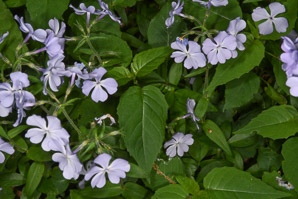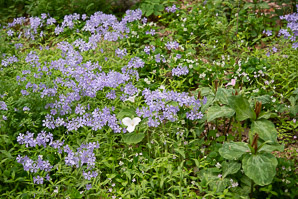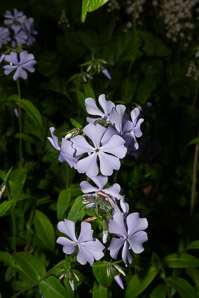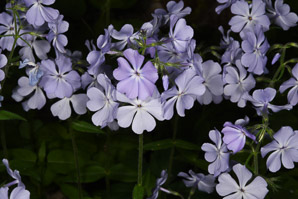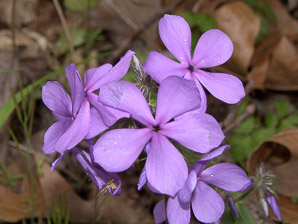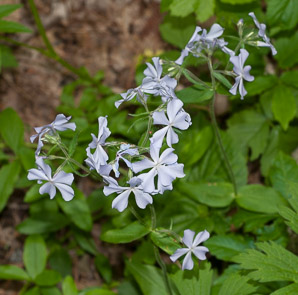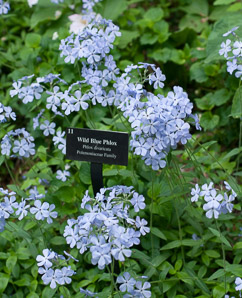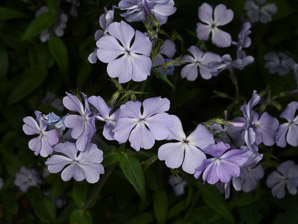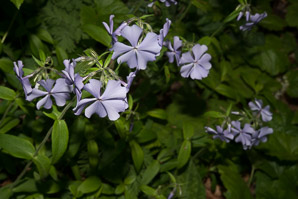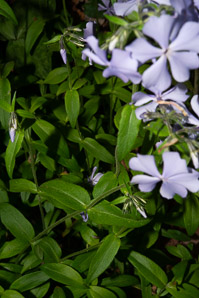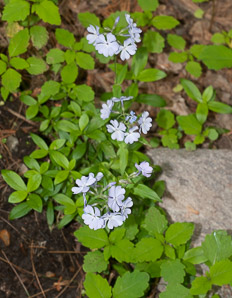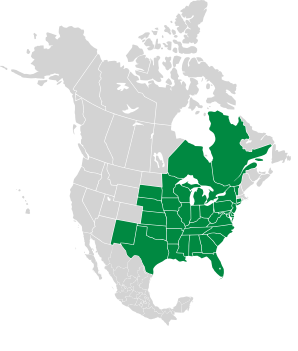
|
Phlox divaricata L. Wild blue phlox, Louisiana phlox, blue woodland phlox, sweet William, wild sweet William, blue woodla
Wild blue phlox is native to eastern North America. It is found in forests and fields. Several cultivars have been created. These plants can form large colonies, and are sometimes used as ground cover. They spread by seed, and they are also stoloniferous, forming plant colonies. Plants: 10-20″ (25-50 cm) in size, with hairy, sticky, decumbent stems. Leaves: Opposite, hairy, up to 2½″ (6.3 cm) × ¾″ (1.9 cm), ovate-lanceolate. Leaves attach directly to, or even slightly clasp, stems. Flowers: Flowers, occurring in clusters, are slightly fragrant, ¾-1″ (2-3 cm) in diameter, comprised of five petals fused at the base into a thin tube. They may be lavender, light purple, blue, pink, or white, appearing Apr-May. If the petals are notched at the tips, you’re looking at Phlox divaricata ssp. divaricata; if not, it is P. divaricata ssp. laphamii. Fruits: Ovoid seed capsules about ⅛″ (4 mm) long contain several small seeds. Online References:
The Lady Bird Johnson Wildflower Center References:
Clemants, Steven; Gracie, Carol, Wildflowers in the Field and Forest, Oxford University Press, 2006, p. 44 5/27/2016 · Acton Arboretum, Acton, Massachusetts The central white flowers are white trillium. · 5/16/2014 · Acton Arboretum, Action, Massachusetts 5/16/2014 · Acton Arboretum, Action, Massachusetts · ≈ 6 × 9″ (16 × 23 cm) 5/27/2016 · Acton Arboretum, Acton, Massachusetts
Phlox divaricata description by Thomas H. Kent, last updated 25 May 2020. © FloraFinder.org. All rights reserved. |
See the crab spider? · 3/18/2000 · Memphis, Tennessee · By Tim Chandler 5/14/2012 · Acton Arboretum, Acton, Massachusetts · ≈ 12 × 8″ (31 × 20 cm) 5/14/2012 · Acton Arboretum, Acton, Massachusetts · ≈ 1 × 1½′ (34 × 52 cm) 5/27/2016 · Acton Arboretum, Acton, Massachusetts 5/16/2014 · Acton Arboretum, Action, Massachusetts · ≈ 9 × 6″ (23 × 16 cm) 5/16/2014 · Acton Arboretum, Action, Massachusetts · ≈ 7 × 11″ (18 × 28 cm) 5/14/2012 · Acton Arboretum, Acton, Massachusetts · ≈ 15 × 10″ (39 × 26 cm) Range: Zones 3-8:
|
